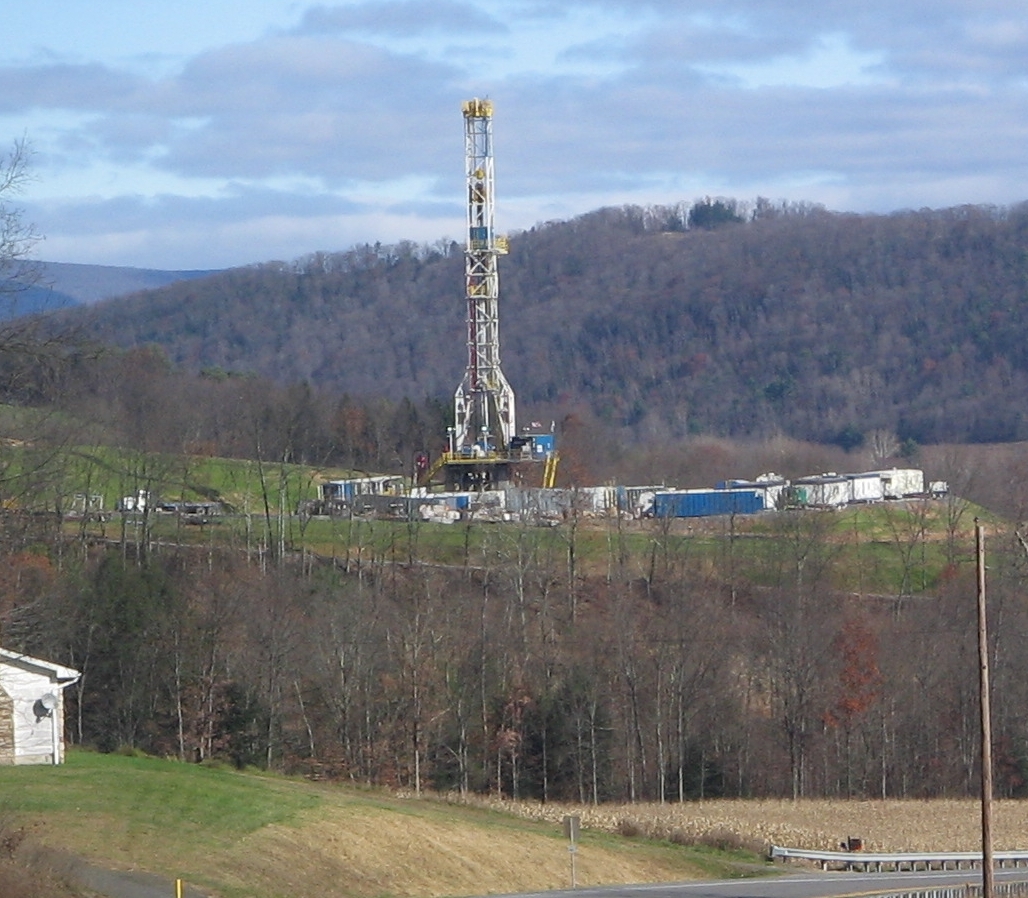In this episode, we dive into a story that might just change the way you think about Pennsylvania’s natural gas fields.
Imagine this: The same wells that have been pumping out natural gas in Pennsylvania could soon be producing something equally valuable – lithium. That’s right, the key ingredient in electric vehicle batteries and smartphones might be hiding in plain sight in the Keystone State.
Let’s set the stage for why this is such a big deal. Lithium has become one of the most sought-after minerals in the world. With the focus on transitioning to electric vehicles and renewable energy storage, the demand for lithium is skyrocketing. The US government is pushing hard for domestic sources of this crucial metal, aiming to reduce dependence on foreign suppliers. And that’s where our story gets interesting.
Enter the Marcellus Shale – a vast underground rock formation that stretches across much of Pennsylvania and neighboring states. For years, it’s been known as a major source of natural gas. But here’s the kicker: The water that comes up alongside the gas, known as produced water, contains significant amounts of dissolved lithium.
Be sure to also subscribe on Apple Podcasts via the link above and please leave us an honest rating and review. We read every one of them and sincerely appreciate any feedback you have. To ask us a question to be featured on an upcoming episode, please leave a comment below or send an email to feedback@mineralrightspodcast.com.
How Much Lithium Could the Marcellus Shale Contain?
Let’s talk numbers, because they’re pretty eye-opening. According to a recent study that we mentioned in the July 2024 News Episode, Pennsylvania could potentially produce about 1,160 metric tons of lithium per year from this produced water. It says:
“Annual domestic Li [Lithium] consumption is estimated at 3,000 metric tons28. Astoundingly, statewide Li mass yield estimates suggest Marcellus Shale production wastewater from Pennsylvania could meet 38–40% of current domestic consumption, assuming 100% Li recovery and extraction processes are more cost effective than competing uses for the water.”
Said another way, the Marcellus Shale in PA has the potential to meet almost 39% of the current annual lithium consumption across the entire United States.
We’ve covered the potential for Lithium extraction in the Smackover formation in East Texas and southern Arkansas in several episodes – if you haven’t already be sure to listen to MRP 208: The Rise of Lithium: Implications for Mineral Rights Owners
In that episode we talk specifically about the Smackover formation and the exploration that ExxonMobil and others are doing to quantify the lithium potential in that area. A question that came to mind as we were researching this episode is how does the Marcellus Shale compare to the Smackover formation in terms of lithium potential. According to another study that we found, the Gulf coast Smackover generally contains between 146 and 386 mg per liter of Lithium and the total resource is estimated at between 750,000 and 1 million tons of Lithium.
Comparing this to the Appalachian basin, the Marcellus shale which is from the Devonian age is estimated at a similar concentration of between 148 to 277 mg per liter and a total resource potential of 1.44 to just over 8 Million tons.
So based on this information, it looks like the Marcellus could actually contain more lithium than the well known Smackover formation.
Where is the Lithium Potential Highest in Pennsylvania
But as with any good story, there’s more than meets the eye. Pennsylvania’s natural gas production is mainly concentrated in two areas – the northeast and southwest parts of the state. And it turns out, these regions have some interesting differences when it comes to lithium potential.
In northeast Pennsylvania, the produced water has higher concentrations of lithium, but the wells produce less water overall. Southwest Pennsylvania, on the other hand, has lower lithium concentrations in its water, but the wells produce a lot more of it. Here’s the twist: Despite pumping out about twice as much water, wells in southwest PA only generate about 26-38% more lithium than their northeastern counterparts. It’s a reminder that in the world of mineral extraction, more isn’t always better.
One thing to keep in mind with this study is that while it is based on empirical data, specifically produced water volumes and water chemical analysis data reported to the Pennsylvania Department of Environmental Protection (DEP) to predict Lithium mass that could be extracted, it is not reporting the actual amounts of Lithium that has been extracted. In other words, this study talks about the untapped potential of dissolved lithium that is contained within the produced water that is a byproduct of current natural gas production in the Marcellus shale in Pennsylvania.
Similar to the way that engineers will forecast the estimated ultimate recovery of natural gas or oil that a well will produce over its lifetime, this study performed this same type of analysis to forecast ultimate recovery of lithium across the state as well as within two distinct sub areas: NE and SW PA. In other words, they took the current produced water volumes and forecast those into the future along with the known Lithium brine concentrations to predict the amount of Lithium that might be extracted. Because of the uncertainty and variation from well to well they came up with a probability density function to come up with the maximum likely estimate of 1,160 metric tons per year across the state.
Potential Roadblocks
Now, let’s talk about a hidden challenge in this lithium hunt – something called the magnesium-to-lithium ratio. This might sound technical, but it’s actually pretty simple. The more magnesium there is in the water compared to lithium, the harder and more expensive it is to extract the lithium. It’s like trying to find a needle in a haystack – the more hay there is, the tougher your job becomes.
This is where Northeast Pennsylvania has another advantage. Its produced water has a lower magnesium-to-lithium ratio, making lithium extraction potentially easier and cheaper. Southwest PA, with its higher ratios, might face a tougher and more expensive extraction process. It’s a reminder that in the world of resource extraction, what’s in the water can be just as important as how much water there is.
But there’s another wrinkle in this story – the challenge of declining production. You see, when a natural gas well is first drilled, it produces a lot of water. But over time, just as natural gas production declines, water production declines as well. In fact, a typical well also sees an 80% drop in water production within its first two years.
Just like with the conundrum with natural gas and oil production from shale formations, this means that to keep lithium production high, companies would need to keep drilling new wells or find ways to boost production from older ones.
Other Uses for Produced Water
Now, let’s talk about the bigger picture. Currently, about 95% of the produced water from these gas wells is recycled and used for fracking new wells. Adding lithium extraction to the mix would make things more complex. It could mean more transportation, more processing facilities, and more waste to deal with. But on the flip side, the added value from lithium could help offset these costs and potentially make the whole operation more economically viable.
And here’s something exciting to consider – there’s still untapped potential. North-central Pennsylvania, an area that’s still largely undeveloped for gas production, has some of the highest lithium concentrations seen in the study. And with estimates suggesting that the Marcellus Shale has enough gas to last several more decades, the lithium potential could be a long-term play.
Summary
To recap the main points: Pennsylvania’s natural gas fields have the potential to produce a significant amount of lithium – enough to make a real dent in US demand. There are regional differences that could affect production strategies. And while there are challenges to overcome, the potential benefits are substantial.
It leaves us with an intriguing question: Could Pennsylvania, long known for its coal and then its natural gas, become the “Lithium Valley” of the East? Only time will tell, but one thing’s for sure – the intersection of energy production and critical minerals is a space to watch.
Resources Mentioned in this Episode:
- MRP 208: The Rise of Lithium: Implications for Mineral Rights Owners
- Researchers in Pittsburgh discover large source of lithium in Pennsylvania
- Estimates of lithium mass yields from produced water sourced from the Devonian-aged Marcellus Shale | Scientific Reports
Thanks for Listening!
To share your thoughts:
- Leave a comment or question below (we read each one and your question may be featured in a future episode)!
- Ask a question or leave us feedback via email: feedback@mineralrightspodcast.com.
To help out the show:
- Leave an honest review on Apple Podcasts or wherever you get your podcasts – we read each one and greatly appreciate it. Plus, you can get a shout out on a future episode!
Thanks again – until next time!



